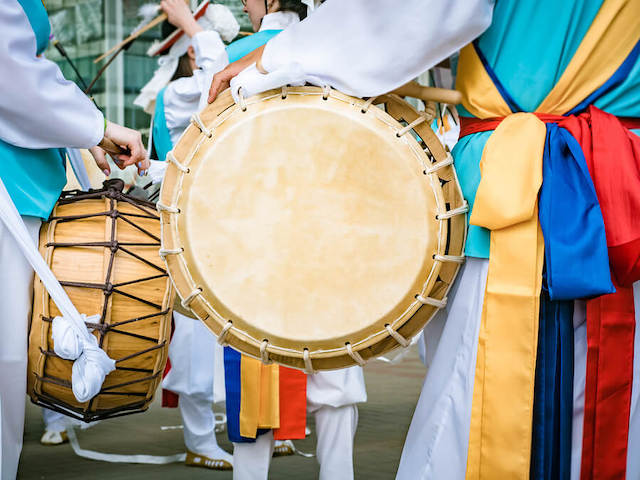Many of us know what Korean pop music sounds like. But what about their traditional forms of music?
Long before K-pop, the Koreans were already known to be a very artistic and musical society. If ancient records from Chinese historians were anything to go by, Koreans loved to sing and dance. In those days, folksongs were the people’s way of bringing people together and lifting up their spirits. There were also other genres like majestic court music fit for royalty. Collectively, traditional Korean music is referred to as ‘국악’ (gukak), which translates to mean ‘national music’.
It’s fascinating to learn about Korean traditional music to understand the influences that continue to exist in Korean pop music today. It also tells us a lot about the Korean culture and history! So, let’s dive in to learn more about Korean traditional music.
Folk music
Folk music is typically music that is enjoyed by the common people in everyday life. Called ‘민요’ (minyo) in Korean, traditional Korean folk music is extremely varied. They can be categorised according to their musical style or the region of which they came from.
Some forms of Korean folk music include the virtuosic opera style ‘판소리’ (pansori), religious music like Buddhist ‘범패’ (beompae), music in shamanistic rituals, and ‘농악’ (nongak), the music of farmers.
The most famous traditional Korean folk song has to be Arirang, a song that is listed on the UNESCO’s Intangible Cultural Heritage list. Considered to be over 600 years old, there are about 60 different versions of the song, which speak of love, separation, sorrow, and reunion.
Court music
Court or ritual music are those reserved for formal ceremonies and rituals. Today, this type of music is rare, and almost only performed for artistic and cultural preservation and appreciation purposes.
The three main forms of court music are classified according to their origins and influences. A’ak comes from Chinese influences and is reserved for specific rituals only. Dang-ak uses instruments from the Tang dynasty in China, but with independent developments in Korean music culture. Hyang-ak is considered the native Korean traditional music, which uses native string and wind instruments.
Instruments of Korean traditional music
Although Korean traditional music has influences from around the region, it does have its unique instruments.
Gayageum is a plucked string zither instrument which is placed on the lap. It looks similar to the Chinese guzheng. Geomungo is a bass version of the gayageum, with fewer strings and a lower timbre.
For wind instruments, there are two main varieties. Danso is an oboe-like reed wind instrument, which is played held vertically. Conversely, the daegeum is a transverse flute, meaning it is held horizontally and played by blowing over the air hole.
There are also a variety of percussion instruments that make up Korean traditional music, including different types of gongs, drums, and chimes.
If you find traditional Korean music fascinating, why not make the effort to learn more about the Korean culture and language as well? Here at Sejong Korean Language School, we’re passionate about spreading knowledge of not just the Korean language, but also the Korean culture. Our teachers are also well-qualified native Koreans, so you can rest assured they know their stuff!
Immerse in the world of Korean by enrolling in one of our online trial classes today. We look forward to meeting you!


